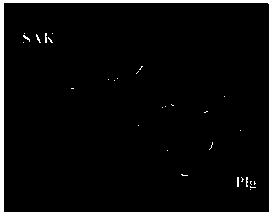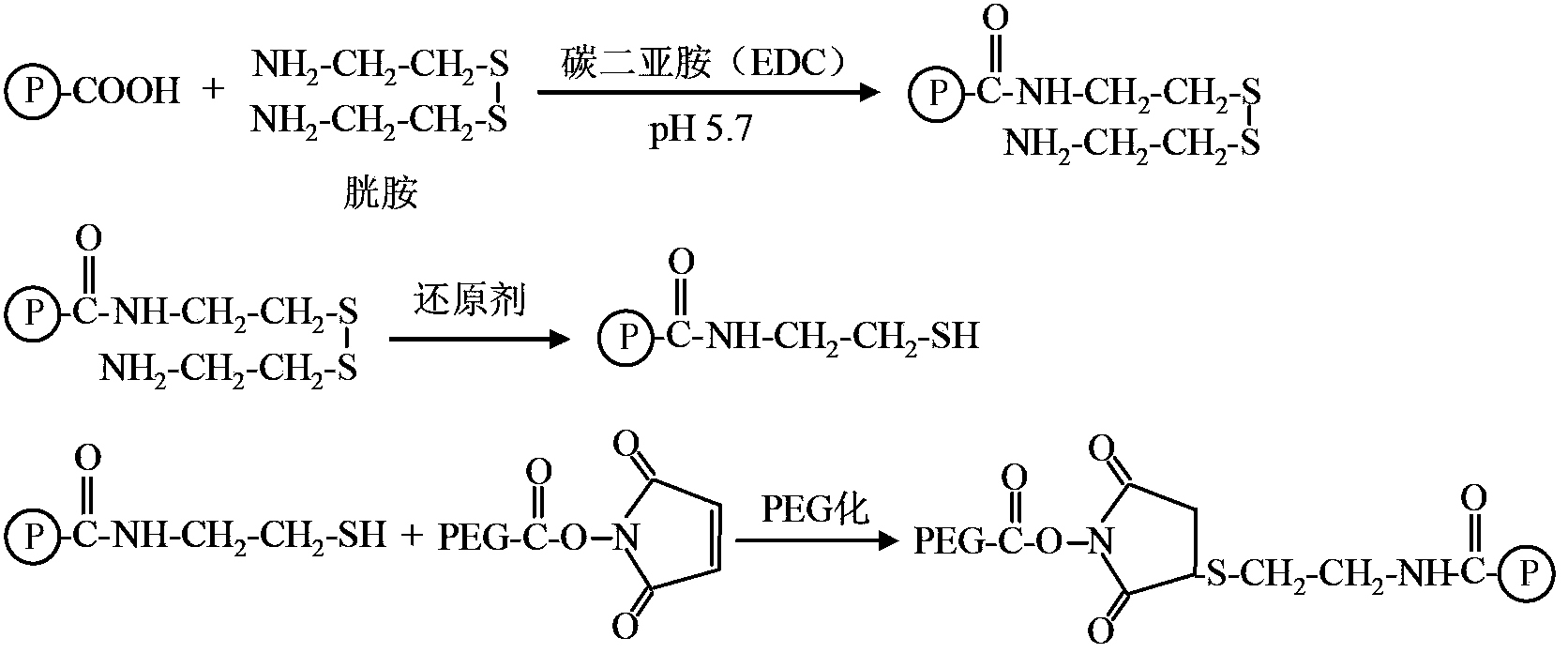Method used for selective modification of protein carbon terminal carboxyl groups with polyethylene glycol
A polyethylene glycol and selective technology, applied in the field of protein chemistry, can solve the problems of protein molecular cross-linking and poor selectivity, and achieve the effect of overcoming poor selectivity and realizing selective modification
- Summary
- Abstract
- Description
- Claims
- Application Information
AI Technical Summary
Problems solved by technology
Method used
Image
Examples
Embodiment 1
[0024] The C-terminal carboxyl group selective modification of embodiment 1 recombinant staphylokinase
Embodiment approach
[0026] Replace staphylokinase into 0.05mol / L MES buffer (pH 5.5), then add EDC and cystamine to react at 4°C for 3 hours, wherein the molar ratio of EDC and cystamine to staphylokinase is 2:2:1, Then add TCEP for reduction reaction, react at 4°C for 2 hours, and finally react with PEG-mal with a molecular weight of 20kDa, the molar ratio of staphylokinase and polyethylene glycol modifier is 1:4, and react at 4°C for 8 hours. After separation and purification of the above-mentioned PEG-modified products, they were analyzed by Superdex 200 gel filtration column and SDS-PAGE electrophoresis.
[0027] result
[0028] Such as figure 1 As shown, a single characteristic elution peak of staphylokinase (SAK) appears on the gel filtration column. After introducing sulfhydryl groups on the staphylokinase molecule, the characteristic elution peak position of thiolated staphylokinase (SAK-SH) is basically No change occurred. After binding PEG molecules, the position of the elution peak ...
Embodiment 2
[0030] The PEG modification site identification of embodiment 2 staphylokinase single modification product
PUM
| Property | Measurement | Unit |
|---|---|---|
| molecular weight | aaaaa | aaaaa |
| molecular weight | aaaaa | aaaaa |
Abstract
Description
Claims
Application Information
 Login to View More
Login to View More - R&D
- Intellectual Property
- Life Sciences
- Materials
- Tech Scout
- Unparalleled Data Quality
- Higher Quality Content
- 60% Fewer Hallucinations
Browse by: Latest US Patents, China's latest patents, Technical Efficacy Thesaurus, Application Domain, Technology Topic, Popular Technical Reports.
© 2025 PatSnap. All rights reserved.Legal|Privacy policy|Modern Slavery Act Transparency Statement|Sitemap|About US| Contact US: help@patsnap.com



